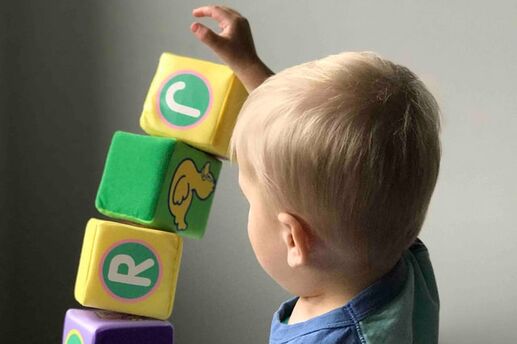Helping Your Baby's Motor Development

From the moment you bring your baby home, you’re spending almost every precious moment with her. And even though it seems as if all she does is eat, sleep, and poop, changes are happening.
Here are some major motor development milestones -- movements that use large muscle groups -- and ways you can support your baby on her way to her next breakthrough.
Reaching
One of the earlier motor development milestones is reaching. Your little one will begin working on this between 4 and 7 months of age. In this time frame, you may see her reach for things with one hand and learn how to pass things between hands.
How you can help: Blow bubbles in your baby’s direction and encourage her to reach for them. Place favorite toys slightly out of reach.
Sitting
Many babies are able to sit with support at around 6 months of age, and may soon move on to sitting without support. (Some babies take longer -- don’t be alarmed if your baby needs a little more time to master this.)
How you can help: Give your baby supervised floor time to play every day, and she will follow her own pace. Once she can sit for a few moments without toppling over, introduce simple games like clapping or rolling a ball. Keep sessions short -- just a few minutes at a time, and always stay close to her. A C-shaped pillow (such as a breastfeeding pillow) can offer some light support.
Crawling
Crawling often happens between 7 and 10 months. Your little cruiser may have a unique style -- a crab-style crawl, for instance.
How you can help: Start tummy time at birth, letting her spend some time on her tummy every single day. Those toys you put slightly out of her grasp to encourage reaching? Move them just a little bit farther away. As she starts to propel herself forward, and move on her own, make sure that the space she explores is safe and supervised. You can also try placing a thin, rolled-up receiving blanket under your baby and demonstrate rocking back and forth on your hands and knees. Rocking is the jump-starter to crawling; before you know it, you’ll be chasing her all through the house!
Standing
At around 9 to 11 months, your baby may pull herself up to stand. At first, she'll only stay on her feet for a few seconds, holding onto something for support, before plopping down on her bottom. Gradually, she'll improve her muscle strength, balance, and coordination until she's able to stand unsupported.
How you can help: Be sure to give your baby unrestrained playtime on the floor every day. Limit time in seating devices, such as baby seats and bouncers. You can also demonstrate a push toy and let her watch other babies who can stand.
Reaching milestones is an important part of a baby’s life. It’s in these months that your baby develops the crucial skills and motions needed to master the later, complex skills of walking, running, jumping and everything else. Encourage and help your baby throughout by challenging her to do a little bit more each day – she’ll be walking and running before you know it!
Photo by Ryan Fields on Unsplash


